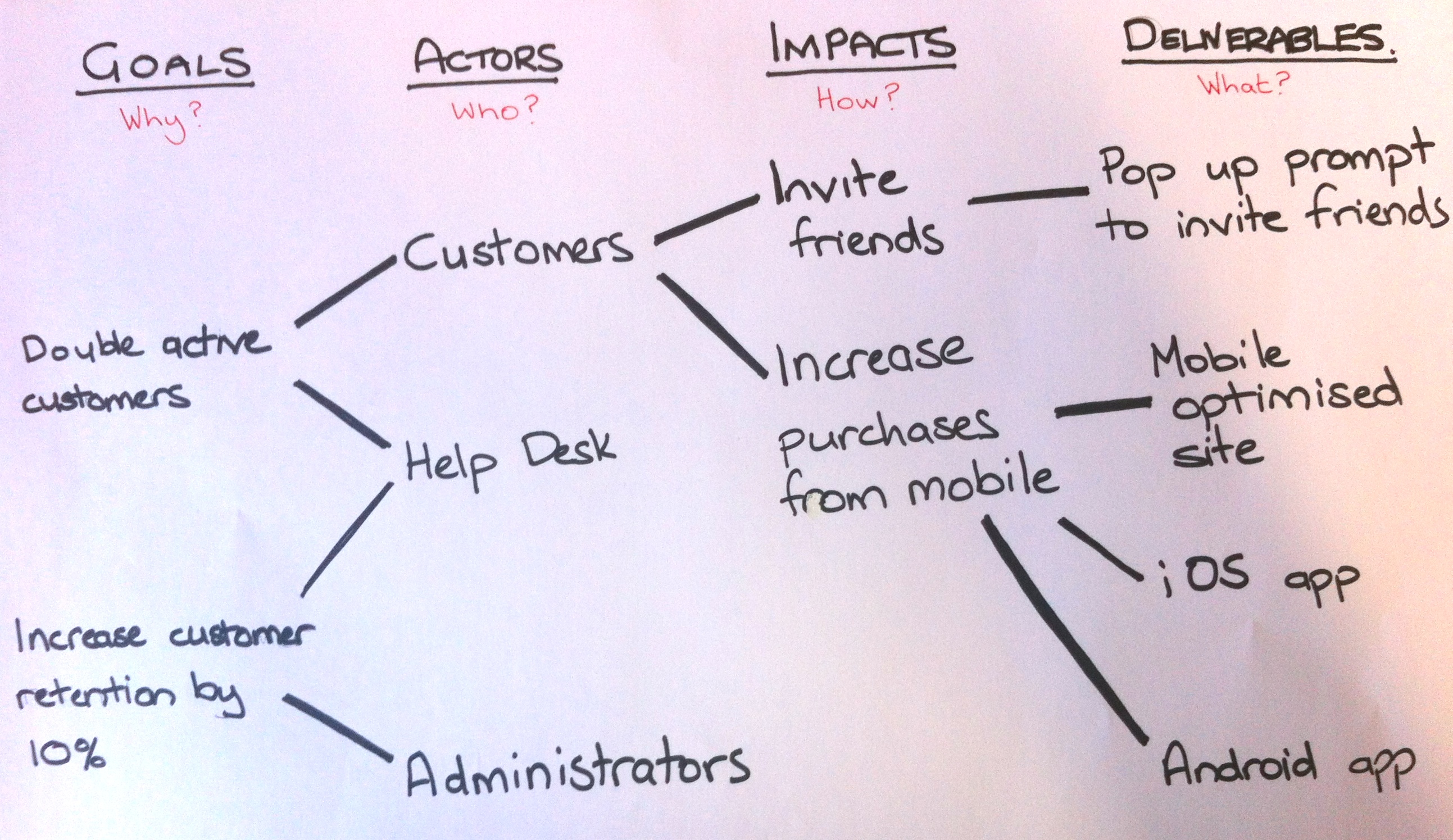By Nathan Donaldson
Tags: Agile

Recently Gavin and I were able to attend an Impact Mapping workshop run by Gojko Adzic. We got to spend the day trying out Impact Mapping and seeing how we can apply it to different situations. It’s an excellent tool, so we thought we would give you a run down on the basics and a couple of ways that you can apply it to your projects.
Impact mapping allows us to link deliverables to high level business goals. By doing so we are able to understand the assumptions and motivations that underpin a user story and how each deliverable helps us move towards business goals. This link helps us to remain focused on delivering value in the highest priority areas.
To begin creating an Impact Map you have a discussion based around four simple questions:
At each step take time to consider how you could measure the goals and changes that you are discussing.

One of the most interesting discussions we covered during the day how to use Impact Mapping to prioritise your backlog.
When working with a large backlog it can be hard to decide which stories offers the most value. You can create an Impact Map in reverse, so start with deliverables, link them to the impacts you would like to have and who these deliverables will affect, then what goals each of those link to. Using that information we can start a different conversation with the business.
Once we have mapped each deliverable back to goals you can then discuss which of these goals is most important to the organisation. For example, is increasing the number of sales more important than increasing customer loyalty? It will hopefully be easy for the business to prioritise these high level goals. Once they have chosen a goal to focus on then you can look back at the deliverable that are linked to that goal and prioritise this smaller subset of the backlog.